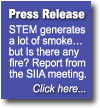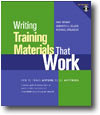
| . |
 |
| . |
 |
| ISPI AWARD OF EXCELLENCE! Wellesley R. Foshay, Kenneth Silber and Michael Stelnicki Writing Training That Works: How to Train Anyone to do Anything A practical guide for trainers based on current cognitive psychology and instructional design theory and research Published by Jossey-Bass Pfeiffer. To find out more or purchase a copy, click on the cover above. Evaluation copies for instructors are available by clicking here. |
Educational Products &
|
Your source for…
What is a cost-effective strategy for product research? It depends! We have a great idea for a new product, Maybe not! Is our school district getting value for our spending on technology? Probably not!
To realize these benefits, what’s needed is the vision, a cost-effective and feasible plan, effective leadership and follow-through. |
| . |
| . |
 |
| Rob Foshay, PhD, CPT |
| Paper: A 3-Phase, 3-scenario view of technology in education |
| There is an ever-growing gaggle of technology visionaries, each pushing some variation of How Technology Will Revolutionize Education. But it hasn’t happened, even after billions of dollars and 10 to 40 years of effort (depending on what you count as the starting point). It’s time for a dose of realism to leaven the vision. |
| Paper: The cognitive approach to instructional design |
|
....According to cognitivists, there are several components of the mind, and each is involved in the learning process in certain ways. How each component of the mind works has implications for how we design instruction. The components are: … |
| . |
| Paper: An education vision |
| ....No Child Left Behind (NCLB) got it half right. Its focus has been almost entirely on compliance: periodic assessment, and efforts after the fact to correct the results of errors in the system (through remediation of students and schools). Even if there were no flaws in execution of NCLB (far from the case now)… |
| . |
| Paper: A definition of alignment |
| ....To begin the process of curriculum planning, you start thumbing through textbooks, and you quickly discover (no surprise) that every book you have that touches on plant biology includes some kind of discussion on photosynthesis! Does that mean that all of these books are aligned to your curriculum standard?… |
| . |
| Paper: A technology for improving performance in schools |
| Research on improving performance in schools has an extensive literature. Particularly useful for the current discussion, however, is research in the field of Human Performance Technology (HPT), which has found extensive application in the private sector and government, and is beginning to be applied in schools…
|
| . |
| . |